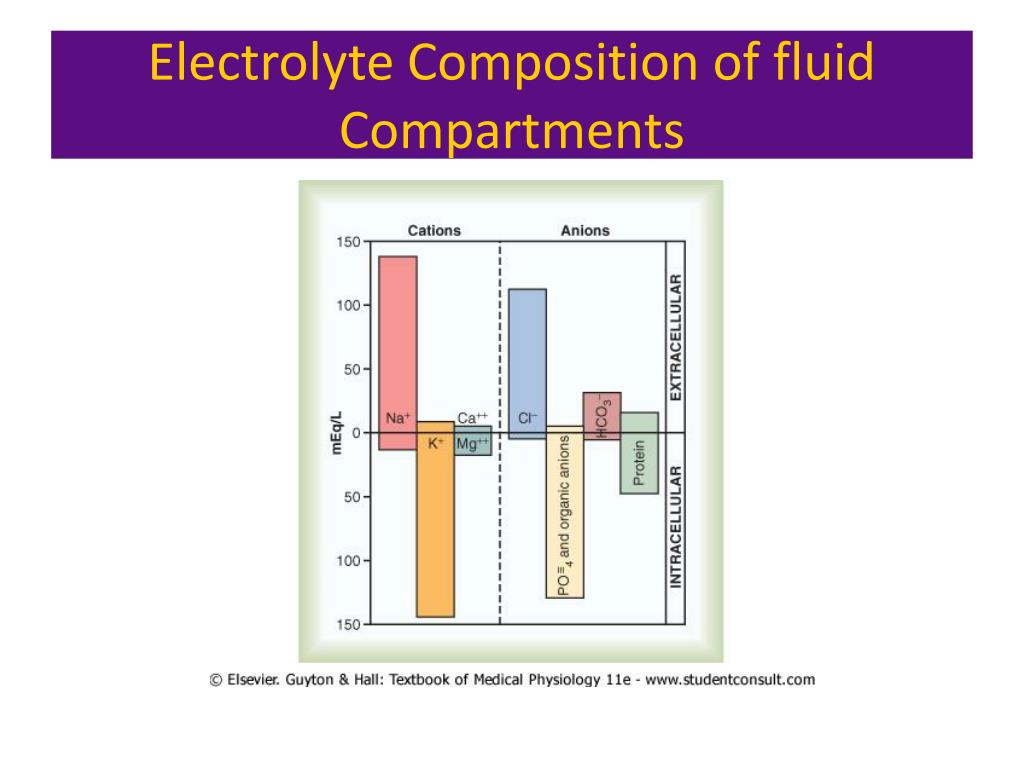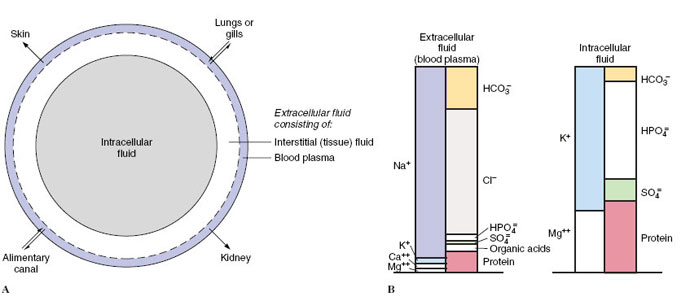

Osmoregulation is the control of fluid balance and composition in the body. One of the essential homeostatic functions of the body is to maintain fluid balance and the differences in solute composition between cells and their surrounding environment. For instance, more protein is inside cells than outside and more chloride anions exist outside of cells than inside.įigure 3.2 Distribution of Body Water Image by Allison Calabrese / CC BY 4.0 Osmoregulation

The composition of solutes differs between the fluid compartments. The extracellular water compartment is subdivided into the spaces between cells also known as interstitial, blood plasma, and other bodily fluids such as the cerebrospinal fluid which surrounds and protects the brain and spinal cord (Figure 3.2 “Distribution of Body Water”). In the human body, water and solutes are distributed into two compartments: inside cells, called intracellular, and outside cells, called extracellular. Solutes refers to all dissolved substances in a fluid, which may be charged, such as sodium (Na+), or uncharged, such as glucose. For example, in water sodium chloride (the chemical name for table salt) dissociates into sodium cations (Na+) and chloride anions (Cl−). Positively charged electrolytes are called cations and negatively charged electrolytes are called anions. Electrolytes are substances that, when dissolved in water, dissociate into charged ions. įigure 3.1 The Water Molecule “Water Molecule” by Chris Martin / Public Domain Fluid and Electrolyte BalanceĪlthough water makes up the largest percentage of body volume, it is not actually pure water but rather a mixture of cells, proteins, glucose, lipoproteins, electrolytes, and other substances. Additionally a study conducted at the Fred Hutchinson Cancer Research Center in Seattle found that women who drank more than five glasses of water each day had a significantly decreased risk for developing colon cancer. But, we do know that dehydration accelerates the aging process whereas keeping hydrated decreases headaches, muscle aches, and kidney stones. Does the loss in body water play a role in the aging process? Alas, no one knows.

This also means that if a person gains weight in the form of fat the percentage of total body water content declines.) As we age, total body water content also diminishes so that by the time we are in our eighties the percent of water in our bodies has decreased to around 45 percent. (This gender difference reflects the differences in body-fat content, since body fat is practically water-free. Adult males typically are composed of about 60 percent water and females are about 55 percent water. Fortunately, humans have compartmentalized tissues otherwise we might just look like a water balloon! Newborns are approximately 70 percent water.

An adult consists of about 37 to 42 liters of water, or about eighty pounds. Water is made up of 2 hydrogen atoms and 1 oxygen atom (Figure 3.1 “The Water Molecule”). Undernutrition, Overnutrition, and MalnutritionĪppendix A: Comparison of Dietary Reference Intake Values (for adult men and women) and Daily Values for Micronutrients with the Tolerable Upper Intake Levels (UL), Safe Upper Levels (SUL), and Guidance Levels The Essential Elements of Physical FitnessĮfforts on the Consumer Level: What You Can Do Lifespan Nutrition During Childhood and AdolescenceĬhapter 15. Lifespan Nutrition From Pregnancy to the Toddler YearsĬhapter 14. Understanding the Bigger Picture of Dietary GuidelinesĬhapter 13. Health Benefits of Moderate Alcohol Intakeĭietary, Behavioral, and Physical Activity Recommendations for Weight Management The Role of Proteins in Foods: Cooking and Denaturation Health Consequences and Benefits of High-Carbohydrate Diets The Functions of Carbohydrates in the Body Overview of Fluid and Electrolyte Balanceĭigestion and Absorption of Carbohydrates Indicators of Health: Body Mass Index, Body Fat Content, and Fat Distribution


 0 kommentar(er)
0 kommentar(er)
